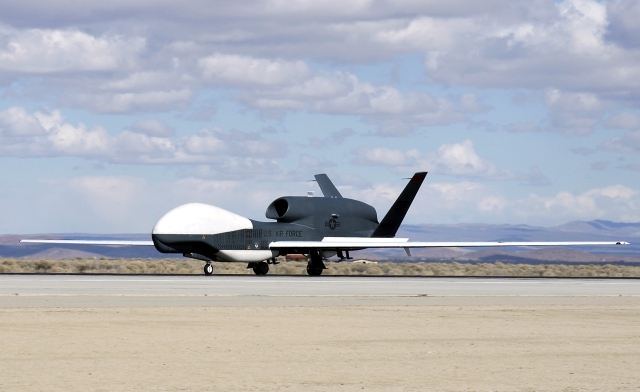Inside the CIA’s New Drone Arsenal

Inside the CIA’s New Drone Arsenal
By Nathan Hodge
April 26, 2010 |
In Iraq and Afghanistan, the U.S. military has long been wise to a problem: Weapons designed for Cold War combat are often too powerful — and too lethal — for low-intensity conflict and counterinsurgency. Now it seems the CIA is catching on to the concept as well.
In today’s Washington Post, Joby Warrick and Peter Finn report that the CIA may be using “new, smaller missiles” to take out suspected insurgents in Pakistan’s tribal areas, in combination with better surveillance and other technological upgrades.
Last month, they write, a CIA missile “probably no bigger than a violin case and weighing about 35 pounds” targeted a house in Miram Shah, in Pakistan’s South Waziristan province. The strike killed a top al-Qaeda organizer, along with several others. Such precise, low-collateral-damage attacks, they add, “have provoked relatively little public outrage.”
Leaving aside the question of whether the CIA’s campaign of targeted killing is any less controversial — our pal Peter Singer argues that is isn’t — the agency’s acquisition of less-lethal weapons is intriguing. While the agency refused to comment on the specifics, it’s pretty easy to guess what’s going on here.
Take the AGM-114 Hellfire missile, once the primary weapon in the drone arsenal. The hundred-pound missile packs a warhead that was originally designed to destroy a main battle tank. Use it against a more lightly armored target — say, a civilian car — and it’s overkill. At the military’s behest, contractors have long been developing a number of alternatives for arming drones.
The video here shows a test launch of Scorpion, a thirty-five pound precision glide bomb developed by Lockheed Martin. As our own David Hambling reported in December, Scorpion uses a vicious warhead known as Battleaxe which “combines shaped-charge, fragmentation and enhanced blast in one compact package, and adds an extra bonus: it throws out fragments of reactive material which explode on impact, making it especially effective against unarmored vehicles and other soft targets. This type of explosive technology can make smaller munitions as effective as their bigger predecessors.”
Scorpion was conceived as a competitor to the GBU-44 Viper Strike, a small glide bomb that has already been tested in combat (the Army integrated Viper Strike, a derivative of the Brilliant Anti-Tank Munition, on the RQ-5 Hunter drone).
As Hambling noted, weapons designers have been rushing to develop a number of off-the-shelf air-to-surface weapons for drones, using parts from existing missiles. The Thales Lightweight Multirole Missile, he notes, was developed using elements from Thales’s Starstreak/Starburst anti-aircraft missiles, and weighs 28 pounds. Raytheon’s Griffin missile is a similar effort: It combines parts of the company’s Javelin man-portable anti-tank missile and AIM-9X Sparrow air-to-air missile. It weighs in at 45 pounds.
The Army even put money toward the Advanced Precision Kill Weapon System (APKWS), an effort to design a “smart” 2.75-inch rocket (the Hydra 70 rockets currently fired from helicopters are unguided, area-effect weapons). The Navy, which took over the development effort, recently declared that the APKWS was ready to enter production.



